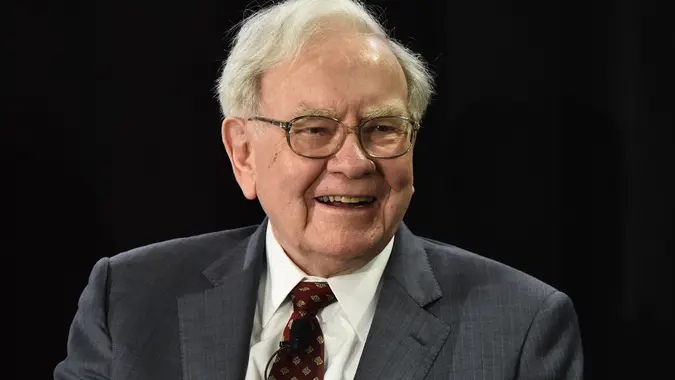Jaspreet Singh Reveals How To Make Investing a Habit

Commitment to Our Readers
GOBankingRates' editorial team is committed to bringing you unbiased reviews and information. We use data-driven methodologies to evaluate financial products and services - our reviews and ratings are not influenced by advertisers. You can read more about our editorial guidelines and our products and services review methodology.

20 Years
Helping You Live Richer

Reviewed
by Experts

Trusted by
Millions of Readers
Jaspreet Singh is a popular YouTube vlogger and financial personality with over 1.7 million subscribers to his “Minority Mindset” channel. While always stressing that he’s not a licensed advisor and is just offering advice on how he has succeeded, he offers easy-to-follow recommendations for how to save and invest, particularly when it comes to generating cash flow.
In a Sept. 20, 2023 post on X, Singh suggested that to make investing a habit, you need to treat it like a monthly bill. But what exactly does that mean, and how can you implement such a strategy? Read on to learn more.
Treat Investing Like a Monthly Bill
In a simple post, Singh highlighted one of the best strategies for making investment a habit. Far too many Americans treat saving and investing as something you do with your money that’s “left over” every month after paying for your necessities. The problem is, if you think of investing like that, you’ll rarely set anything aside.
However, if you frame investing as a “bill” that’s just as important as your rent or mortgage, you’ll send money to your savings and investments first, ahead of discretionary spending and even your “less important” bills.
The trick is simple — when you make your monthly budget, make a line item for “savings/investments,” and allocate the appropriate amount to it. Singh recommends that you allocate 15% of your income to your investments, in line with many advisors who suggest a 10% to 15% savings rate. After you’ve set aside this money for your investments, you’ll have to find a way to live off the remainder of your income. This could sting at first, but soon you’ll find that investing is a habit and you’ll adapt to it.
Automate Your Contributions
Human nature being what it is, you might struggle at first with setting aside money for your investments. Emotionally, you might feel like it’s “not fair” that you don’t get to spend the money you earned, losing sight of the long-term benefits. Or you might continually encounter “one-time” expenses that seem to crop up every month, taking money out of your investment funds instead of your other income.
To avoid these situations, it’s best to automate your investment contributions. This way, as soon as money hits your account, a percentage of it will immediately go into your investment accounts before you even have the chance to spend it on something else.
Take Advantage of Low Minimums, Zero Commissions and Fractional Shares
Even if you don’t have a lot of money to start out with, Singh’s “Minority Mindset” blog suggests that you can — and should — still set aside whatever is possible. While investing a small sum like $100 used to be nearly impossible, in this day and age, it’s easy for anyone to begin saving and investing.
Many bank and brokerage accounts these days have no minimum balance requirements and charge zero commissions for stocks and exchange-traded funds. Even better, many firms allow you to buy fractional shares of stock. This means that even if you only have $100 to invest and the stock you want is $1,000 per share, you can own 0.10 shares and still be invested. This is groundbreaking for small investors and allows you to get involved in the market even with small sums.
Over time, between your ongoing contributions and the power of compound returns, even your small investments can grow into significant sums — as long as you make investing a habit.
Generate Passive Income
The foundation of Singh’s investment philosophy is generating passive income. The financial personality believes that rather than waiting to earn future capital gains, which may or may not arrive, it’s best to invest for cash flow that puts physical money in your pocket right away. Over time, if you make investing a habit, that cash flow will continually increase.
For example, if you are starting out small and investing in dividend-paying stocks or rental properties through a REIT or crowdfunding investment, the small amounts you add every month will continually increase your income. Once you have enough money to own rental properties outright, which Singh endorses, your rent will naturally increase annually or whenever you have the ability to raise it.
Ultimately, the entire goal of Singh’s investment program is to generate enough cash flow to cover all of your expenses. To Singh, that is the definition of financial freedom and the goal that all investors should strive to achieve.
 Written by
Written by  Edited by
Edited by 

























